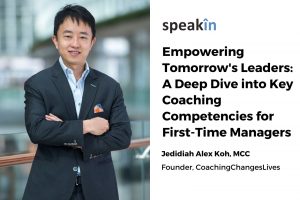Making Employee Engagement Personal
Employee Engagement
The word engagement brings to mind a picture of two people exchanging rings, making a promise or commitment to be with each other forever. In the organizational context the two parties in question are the Employee and the Company. When a company and employee are engaged they are committed to be with each other for a long time and strive towards each other’s success! The process of Engaging employees begins with an understanding of “What Employees Want?” Motivation theories from Maslow, McClelland, Herzberg and Vroom, form the founding stone for various Engagement models and help organizations to focus on key areas that will lead to engagement.
Engagement from the eyes of Herzberg Most engagement surveys measure: Workplace Interactions, Learning, Recognition, Rewards, Policies, Quality of Assignments, Career Growth, Work Life balance covering both Hygiene (Extrinsic) Factors and Motivating (Intrinsic) Factors described in Herzberg’s Theory. Data trends from engagement survey results emphasize that Pay, Company Policies and Working conditions in general emerge as parameters for ‘Sustenance’ which impact engagement negatively if not worked upon. Whereas Recognition, Career Opportunities and Learning emerge as parameters for ‘Growth’ which impact engagement positively if worked upon. An Engagement survey therefore helps in getting an overall Pulse of employees on these factors at Company, Division and Team levels. From the organization point of view it gives a general direction to the organization on gaps that it needs to plug to achieve higher employee engagement. From Employee point of view it captures areas they want the organization to focus on immediately and on priority, and that suitable actions are taken at Company/Division/Team Levels to address these areas.
Engagement and Vroom Engagement champions however, find it difficult to do justice to the Vroom’s expectancy theory both from the organization and individual employee point of view. Let’s consider the organization point of view first, the organisation needs to believe that if it puts efforts in improving employee engagement it will lead to higher company performance, this will lead to commensurate results and such results will be of value to the organisation. Organizations usually measure their end results through Topline and Bottomline achievement and many times because of difficulty in establishing direct linkage of engagement score to these parameters, organisations do not exert serious effort towards engagement. This leads to engagement being seen primarily as an HR activity. From the employee point of view, many models do not promise valence to employees. Each employee is motivated by a different need, but at times Engagement actions are general, not employee specific and therefore may not be of great individual value to employees.
For example if in a team there are 3 employees: Narendra Modi, Sachin Tendulkar and Mother Teresa, each one of them will be motivated differently. Taking from McClelland’s Theory, Modi would be motivated by need for “Power”, Tendulkar by “Achievement”, Mother Teresa by “Affiliation”. But Engagement Models and companies usually average out employee responses and hence lose the essence of what an individual wants. What do Good Employers do? Companies today are putting efforts in customising their offerings based on Employee needs. Let us take the example of Google, which has been able to balance both theory and practice in engaging their employees.
Google – The Dream Employer
Google with a reputation of being a dream Employer , believes in providing both intrinsic and extrinsic rewards to its employees. Google, Inc.’s CEO, Erin Schmitt, states that they built a company around the idea that work should be challenging, and the challenge should be fun. Google puts employees first by providing a unique environment to work around. Google, not only provides general compensation & benefits, but also tops it up with first-class dining facilities, gyms, laundry rooms, massage rooms, haircuts, carwashes, dry cleaning, and commuting buses – just about anything a hardworking employee might want. Schmitt states, “We realize and celebrate that our employees have diverse needs, and that this diversity requires flexible and individually directed support.
Our priority is to offer a customizable program that can be tailored to the specific needs of each individual, whether they enjoy ice climbing in Alaska, want to retire by age 40, or plan to adopt 3 children”. However, the key to Google’s success is the intrinsic rewards it offers: no real hierarchy and small work groups, to maximize creativity. The basic concept inspired by the founders is to maintain an entrepreneurial culture and view small teams as individual start-ups.
Also, if a Googler wants to work with another team, he or she can switch teams easily without having to go through tedious channels. Another unusual perk is each employee is allowed to spend twenty percent of their time to work on their own project. Google, believes that no one should leave in order to pursue their personal passions. Letting employees do this results in over twenty percent of product launches stemming from these personal projects. The fact that a Googler feels the freedom to explore is one of the biggest perks that keeps them excited and on purpose in their work.
Google, attracts top talent because they empower employees to change the world by organizing the world’s information, making people smarter, and teaching people to learn in a different way – they feel they have purpose. Google’s employee offering therefore has a good balance of hygine factors, motivators and benefits that have value to various employees ! Lets take a look now at an example of informal employee engagement by Hari Krishna Exports lead by Diamond merchant Savji Dholakia, who engages employees in his unique way. He does not speak about surveys or a formal process but believes in treating employees as a part of his own family, connecting with everyone personally and taking care of them and their families. His motto is to basically eradicate everything that takes employees focus away from work. Dholakia’s company has long been a trendsetter. 8 years ago it was the first in Surat to build an on-site kitchen for its nearly 6,000-strong staff, and was also the first to distribute helmets to employees who ride to work on motorbikes. It also insured 280 employees who have been with the company for more than a decade to the tune of 1 crore each, and ensures that employees’ families get to go on annual pilgrimages at company cost.
Recently the employees of Hari Krishna Exporters became the envy of every working professional in India as they received Cars, Houses and Jewelry as bonus for good performance. Instead of merely distributing the Rs. 50 Crore as money, Dholakia found out what each employee needs and offered them a suitable reward. Dholakia a primary school dropout from a small village near Amreli in north Gujarat, moved to Surat as a diamond worker and worked his way up. He says, “I know what it is like to have needs. When a worker is happy, he can do anything at all for you.” Savji well has understood and applied the concept of hygine factors, motivators and valence for his employees. Kanak Patel, an employee who has worked in Hari Krishna Exports for the last decade believes the company is truly committed to staff welfare, unlike any other company in the sector: “Apart from the bonus, our company offers benefits like gyms and family programmes; we have the freedom to meet the management with our suggestions; there are drop-boxes located on each floor to receive our ideas. It’s like a family – I wouldn’t dream of leaving this company.” This is what every company would like to hear ! The Employee Engagement focus is changing, companies are today zooming in and personalizing engagement actions to capture the essence of “Whats in it for me!”





